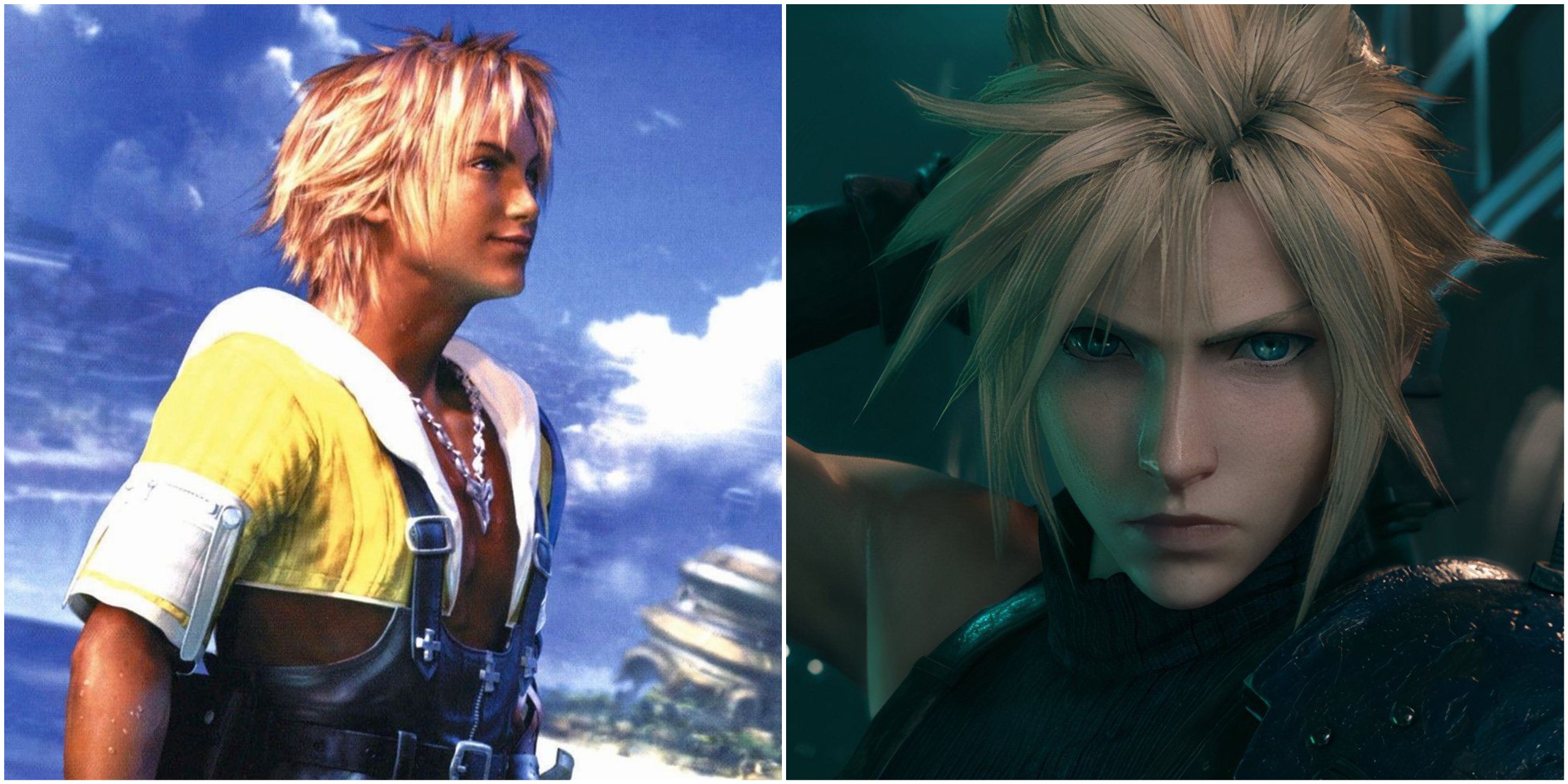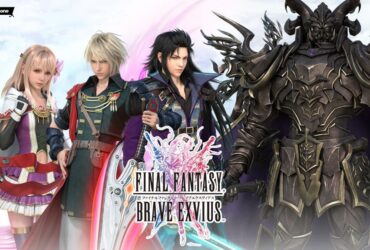Summary
- Moogles, airships, summonings, and crystals are consistent traditions in the Final Fantasy series.
- Deep and complex protagonists experience character arcs, making them stand out.
- Rag-tag party of diverse characters adds layers to storytelling and character interactions.
Though every Final Fantasy game takes place in a different world, with a different environment and entirely different characters, there are still certain traditions carried through each of them to help them feel connected. Whether it be certain gameplay mechanics, vehicles, character quirks, or even simply the animals that appear, there are a few implementations that are always added to help establish an underlying thread throughout the entire series.

Related
Final Fantasy: 8 Most Immersive Games In The Series, Ranked
Out of all the Final Fantasy games in the series, the following will suck players right in and keep them immersed from the beginning until the end.
Additionally, these traditions have helped Final Fantasy differentiate itself from the many other JRPGs it has helped to inspire over the years. With a staggering 16 mainline entries released so far, it seems like a fitting time to reflect on the series, and more specifically, the aspects of it that are featured through almost each and every mainline entry.
9
Moogles
Magical Moogles Have Been Appearing In All Shapes And Sizes Since The Third Game in The Series
Moogles wouldn’t actually appear until Final Fantasy 3, where they showed up as the servants of the wizard Doga, but these small and quirky creatures have become synonymous with the franchise, even turning into its mascot, some might argue. They will always have milky white fur and a rather strange bobble that sits on their head, but everything else about the Moogles can change drastically between the games.
While Final Fantasy 6 presented them as sleepy-looking creatures who always had their eyes shut, in Final Fantasy 7 Rebirth, they are eerily realistic, and even a little scary. Still, no matter what they look like, Moogles are always a sign of wonder and magic, and in most of the games, are there to help the player along their journey.
8
Airship
The Airship Is Usually A Late-Game Form Of Transport Used For Navigating The Overworld
Ever since the first entry of the series, almost every game has had an airship of some sort that players will often receive late into their adventure. After exploring the open world for so long afoot or on Chocobo, the airships make it easy for players to return to past areas in a fraction of the time.

Related
Final Fantasy: Best Tank Party Members In The Games, Ranked
Party members in Final Fantasy games often play unique roles when in combat; here are the best tanks that players can use throughout the series.
The designs of these mighty ships differ greatly, but there is one common aspect that applies to a few of them: Cid. Cid usually assumes the role of pilot, and though he becomes a playable character in 7, his relevance to the story can range from a forgettable side character to a life-saving ally for the party.
7
Summonings
Summonings Have Been Not Only Power Ups, But Even Characters Within The Plots Of Their Games
Summonings have been a traditional power-up implemented in every Final Fantasy game since 3, and are often seen as a last resort to help finish off a battle through their unrivaled power. For many of the games, the summonings will have different names, such as Eidolon or Eikons for example, but will always be the same entities known from mythology, such as Shiva, Ifrit, or Bahamut, to name a few.
This is a fun tradition to have in place as it means any time these god-like behemoths show up in a game, players are always giddy to see their return, and how they’ve changed since their last iteration. Summonings only became more cinematic with Final Fantasy 7, and have gone on to become visual spectacles in their respective games.
6
Jobs
Jobs Have Long Been A Core Component Of The Franchise’s Progression Systems
Admittedly, this is one of those traditions that the developers have been altering, or even removing entirely from some of the games, but the Job system introduced in the original Final Fantasy still deserves a mention here for how many times it has shown up as a mechanic. Assigning characters to specific roles that come with unique powers and abilities allows each party member to feel diverse in what they bring to the table, while also slightly streamlining the progression.
Back when the first Final Fantasy game was released, RPGs were primarily seen as very difficult and complex games, but Jobs added a level of accessibility thanks to how easy they were to understand. As mentioned previously though, Jobs have taken many different forms, and the more action-oriented the series has become, the less this traditional system has been appearing.
5
Crystals
The Mystical Crystals That Appeared In The First Game Have Been Re-Introduced Multiple Times
In the first Final Fantasy game, the crystals controlled the four elements of the world, and therefore played a vital role in the story. Since then, though their relevance has wavered over time, they are always involved in the story in one way or another. In Final Fantasy 8 there’s the Crystal Pillar, for example, meanwhile, 12 has the Great Crystal, and a powerful Crystal even plays an important role in the fifteenth game too.

Related
8 Final Fantasy Boss Fights With The Most Layers Of Strategy
There’s a lot that players will need to think about strategically when entering battle against these tough Final Fantasy bosses.
Final Fantasy 13 saw characters being turned into crystal if they failed to fulfill their focus, making them appear as more of a dangerous aspect of the story. However, the one running thread is that crystals are always shown to be somewhat powerful, and even more mysterious in their nature and origins.
4
Deep And Complex Protagonists
Every Final Fantasy Protagonist Embarks On Their Own Personal Journey Which Sees Them Change And Adapt
In a Final Fantasy game, the protagonist is never just a vehicle to move the story from A to B. They will always have at least some unexplored depths to their character which are explored throughout the story, allowing them to experience a full character arc over the course of their adventure. Cloud, Zidane, Squall, and Terra arguably have the best arcs of the main protagonists, but even those who aren’t as popular still have more depth to them than a typical protagonist would in many other games.
Despite a lot of Final Fantasy 15 being shifted around or cut out completely, for example, the game still succeeds in showing Noctis’ journey from a naive and ignorant prince to a king who understands his newfound responsibility. Clive is also a big example of this, being the standout of Final Fantasy 16, even for those who weren’t too in love with the gameplay.
3
Rag-Tag Party Of Diverse Characters
Final Fantasy Parties Are Known For Being Varied And Diverse In The Characters That Make Them Up
The Heroes of Light in the first game may not have had much character to them individually, but they still stood apart due to their classes which still made them feel inherently different from one another. As the series has gone on though, Square Enix has leaned more into the idea of each party being made up of characters of vastly different backgrounds, ideologies, and beliefs in order to tell compelling stories.
For example, the cast in Final Fantasy 10 may all be Guardians on a pilgrimage, but Wakka’s diehard belief in Yevon, mixed with Auron’s no-nonsense persona, Yuna’s optimism, and Tidus’ naive personality, creates a wonderful mix of character types that bounce off one another. The same can be said for virtually every game in the series, barring possibly 16, which tells a solo story, but is the only exception to this tradition.
2
Chocobos
These Golden Feathered Birds Always Manage To Appear In One Form Or Another
The big, bright, and chirpy yellow birds known as Chocobo have been appearing in the series ever since the very first game. Most of the time, they act as chariots for the party, transporting players across the vast open world so they can get to where they need to go as quickly as possible. In Final Fantasy 7, they became extra important as riding a Chocobo became the only way to make it past the lightning-fast snake that roamed the swamp.
In Final Fantasy 14, players are able to customize their Chocobo to their heart’s content, while in Final Fantasy 16 they were used as weapons of war. A baby Chocobo also played a partial role in the story of Final Fantasy 13, where it lived inside Sazh’s hair. Needless to say, these guys are put in all kinds of strange scenarios, but they’re always instantly recognizable due to their golden fur and signature squawks, which makes them incredibly endearing.
1
Turn-Based Combat
Turn-Based Combat Is Baked Into Final Fantasy’s DNA, Even Though It’s Been More Of An Afterthought Lately
Final Fantasy certainly wasn’t the first game to use a turn-based combat system, and it’s evidently become less of a priority for Square Enix in the two most recent mainline games. However, even in newer entries, it’s clear that turn-based combat is a crucial part of the series’ DNA. In Final Fantasy 7 Rebirth, for example, being able to slow down time, strategize for a few moments, and control party members does harken back to the go-to battle system Final Fantasy followed for so long.
Many fans cite Final Fantasy 10 as having some of the most polished and refined turn-based mechanics, as it allows for switching party members mid-battle, opening up a new layer of strategy. With that being said though, Final Fantasy 8 also stands out for its own experimental take on the formula through the Junction system. Final Fantasy 6 also spruced things up with character-specific special abilities, while 13 offered more of a turn-based action hybrid that blurred the lines between the two.











Leave a Reply